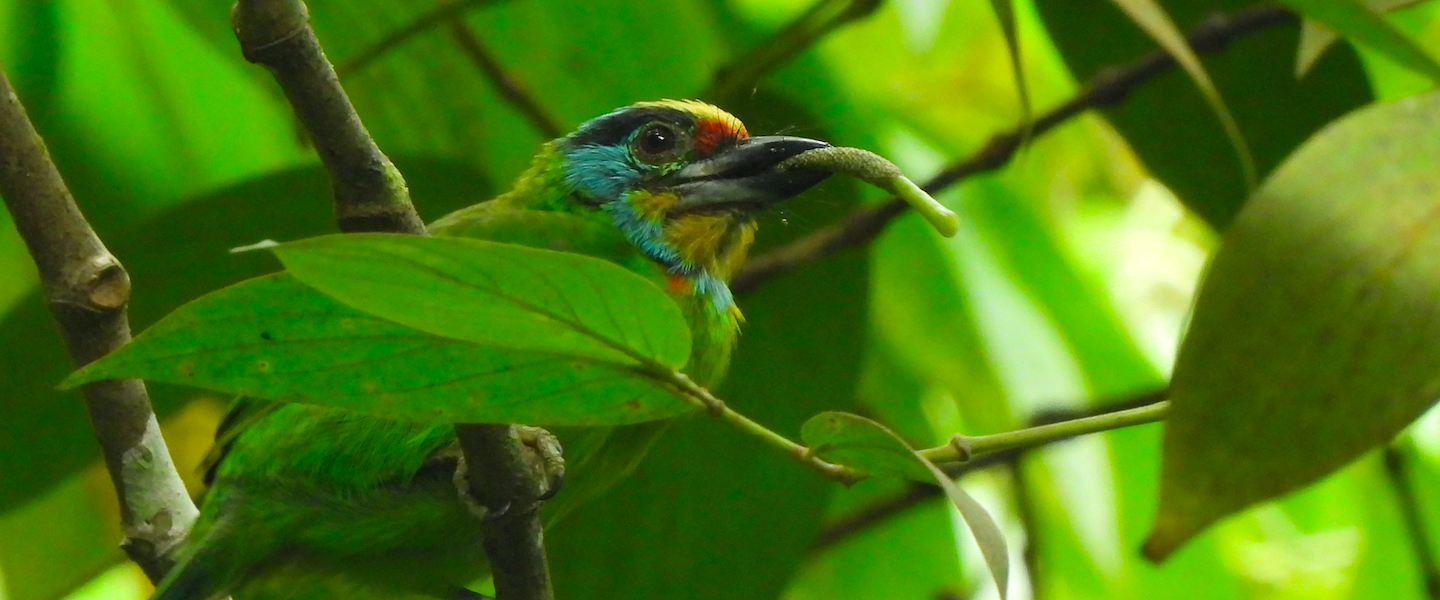I have spent this whole week in Pontevedra with colleagues in the III SIBECOL & XVII AEET Meeting, an Iberian congress on Ecology. My first time in Galicia involved enjoying outings looking for different birds and herps in the evenings and having some fun après sessions at night. The program offered a series of tours on the last day, and I took the chance of visiting Sálvora island, part of the Atlantic Islands of Galicia National Park.
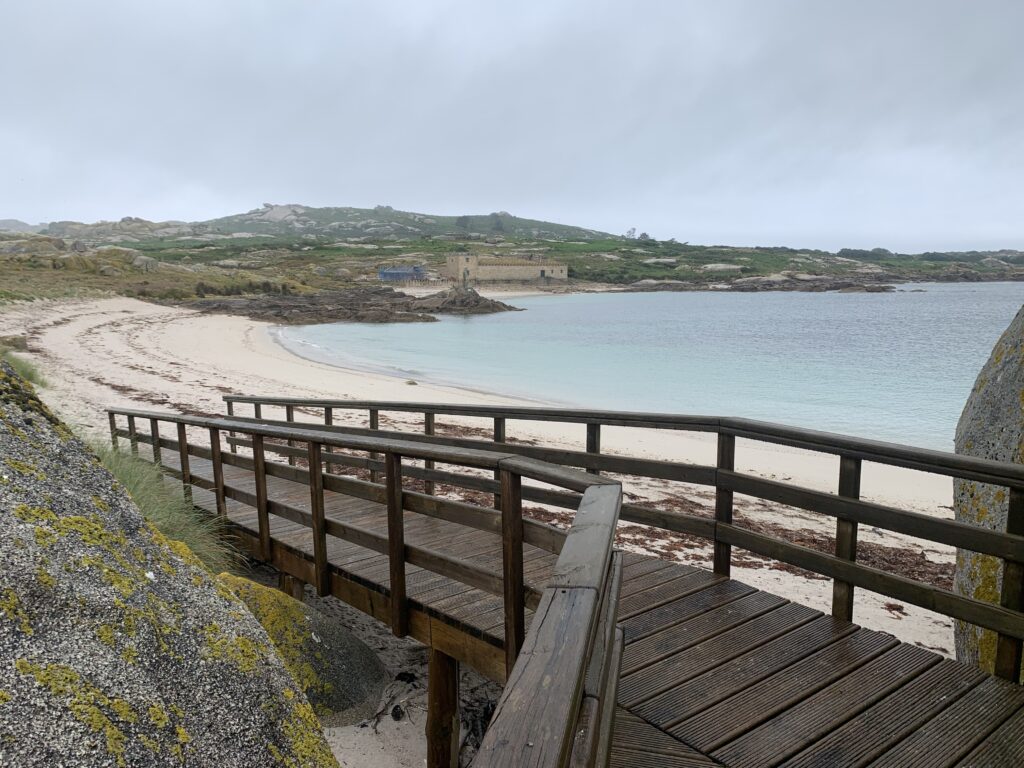
The National Park is composed of the archipelagos of Ons, Cíes, Cortegada and Sálvora. The main island of the latest had been inhabited by farmers and owned by the Otero family for decades. The last inhabitant left the island in 1972, and the island property was fully transferred to the local government only in 2008 — whereas the National Park it belongs to today was declared in 2002. Nowadays, several local-race horses and red deer (Cervus elaphus) roaming the island are part of this history.
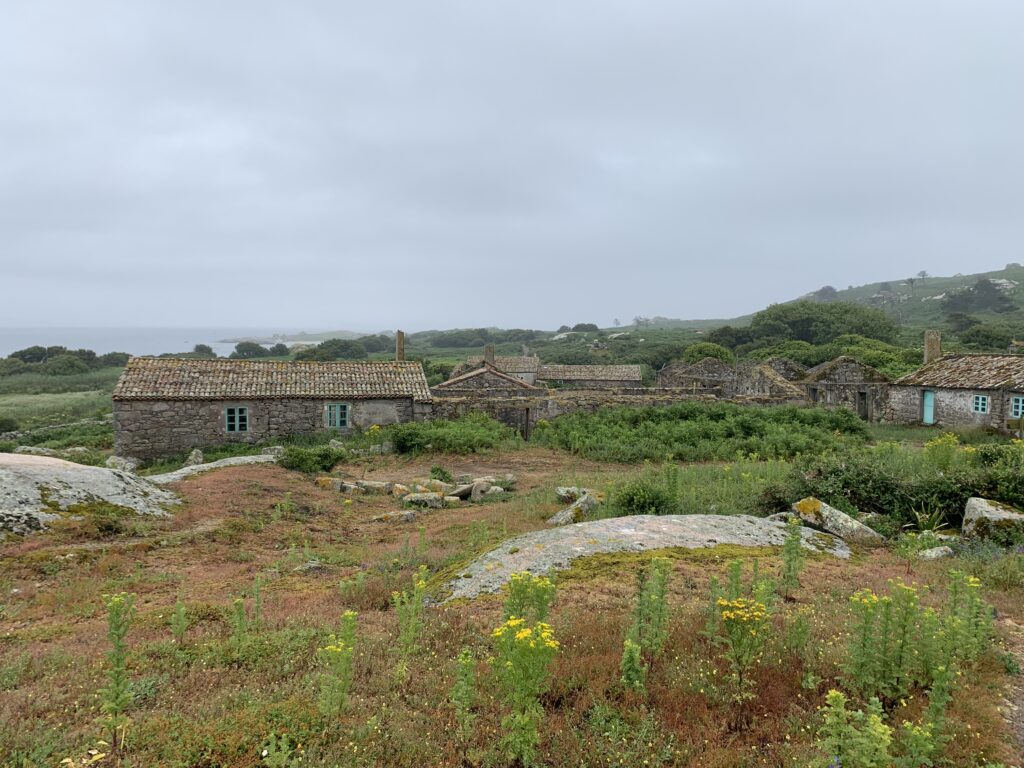
We hopped on a zodiac in Aguiño, in the mainland, under an unpleasant downpour — I left my camera in the mainland to avoid it getting wet, so Marta Monfort kindly shared some of her pictures of the day. The abundant yellow-legged gulls (Larus michahellis) were everywhere to be seen, despite their numbers in Galician colonies have plummeted in the last few years. European shags (Gulosus aristotelis) and oystercatchers (Haematopus ostralegus) were also readily seen in the shore of islets and Sálvora island, once reached. The harbour of the main island is next to a small sandy beach where numerous sanderlings (Calidris alba) and ruddy turnstones (Arenaria interpres) foraged. A thick fog and a constant rain blocked what promised to be awesome views.
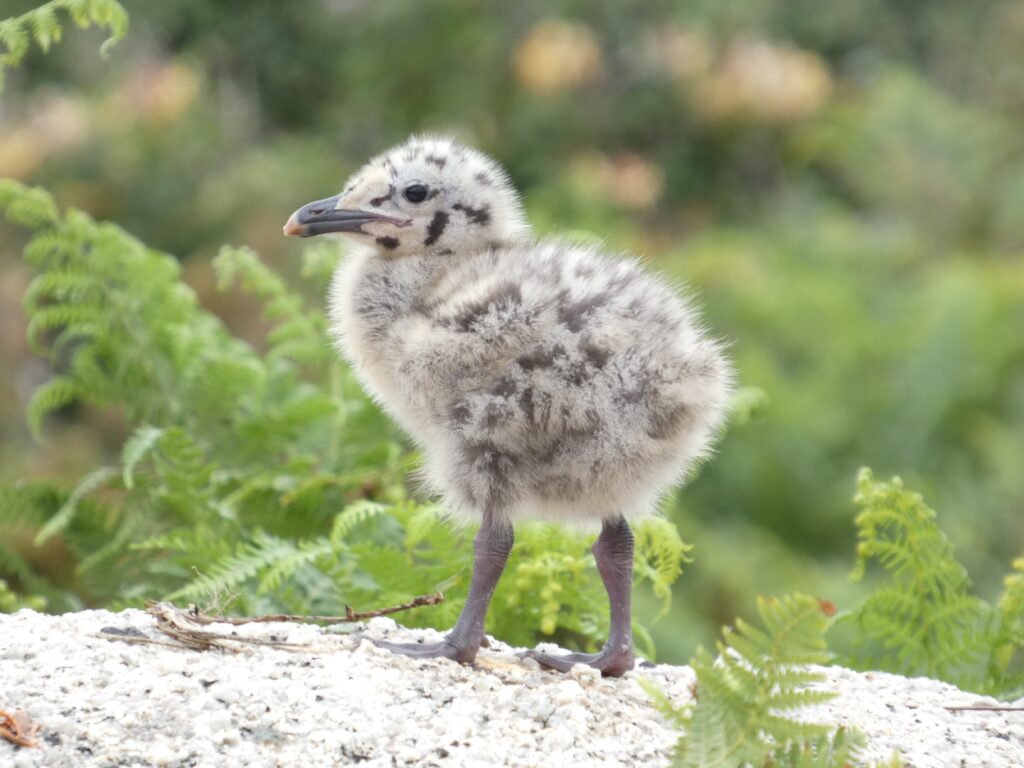
The shrubs across the island were productive with numerous passerines, including vocal blackcaps (Sylvia atricapilla), Eurasian wrens (Troglodytes troglodytes), stonechats (Saxicola rubicola), dunnocks (Prunella modularis), a greater whitethroat (Curruca communis) and adult black redstarts (Phoenicurus ochruros) feeding their chicks in a nest built behind a small sculpture in the local church. We were told a pair of goshwaks (Astur gentilis) inhabit the island, but we only observed a common buzzard (Buteo buteo) being mobbed by numerous gulls.
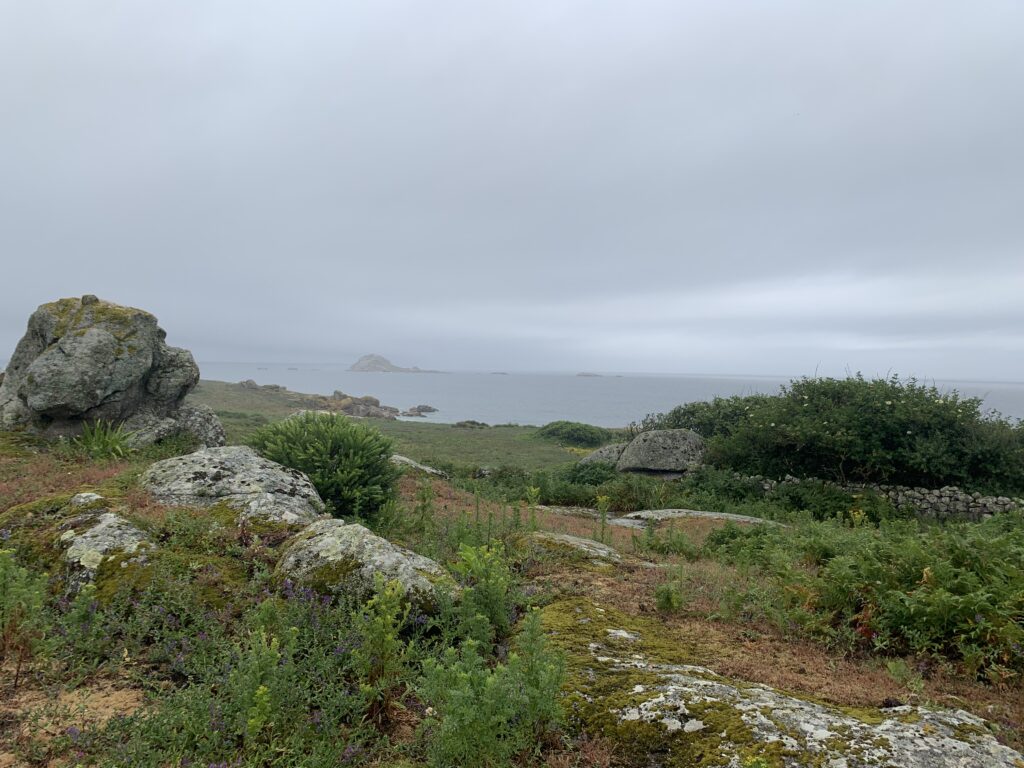
However, among the biggest targets of a southeast Iberian naturalist in Galicia must be herps. Despite not being that far away, a combination of completely different soil composition and rainfall regime make that most amphibians and reptiles in Galicia are absent back at home in Alicante, and vice versa. Sálvora lies just 3 km away from the mainland, and despite some great local specialties are apparently absent — e.g., the Iberian frog (Rana iberica), the fire salamander (Salamandra salamandra) or the beautiful marbled newt (Triturus marmoratus) —, we were greeted by some goodies.
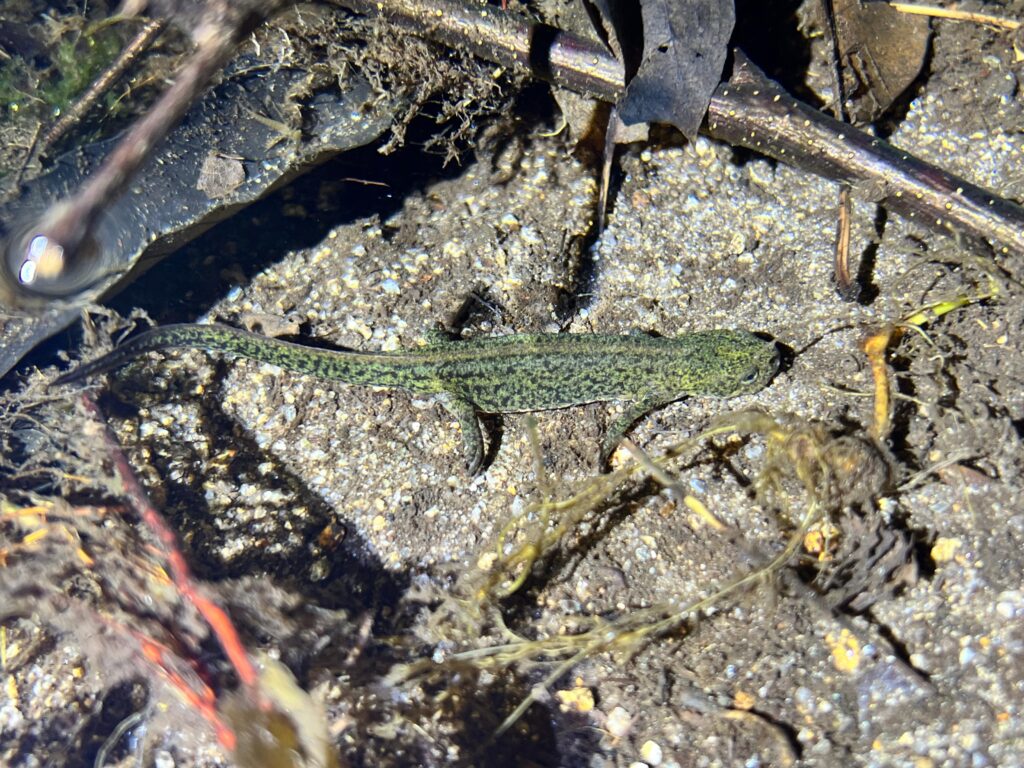
Slaty soils cause several water springs across the island. We checked out a couple of fountains to try our luck. Robust marsh-orchids (Dactylorhiza elata) were at full bloom next to one of them, where we noticed an adult Boscá’s newt (Lissotriton boscai) fading in the underwater litter. This newt is endemic to the western half of the Iberian peninsula and features small populations in several springs of Sálvora.

Reptiles are most notorious on the island. The sound in the bushes next to the paths revealed the presence of lizards, but we took some time to get a glimpse of them. It stopped raining as we walked to the lighthouse, and a stunning ocellated lizard (Timon lepidus) left its burrow to bask in the open. This large lizard is absent in southeast Iberia (where it is replaced by a homologous species) and has three recognized subspecies worldwide — one of them, ssp. oteroi, is only found in Sálvora. Indeed, it was named after the former owners of the island when it was described in 1998. I got the impression that these lizards were somewhat less afraid of people than their homologues in the mainland, as we enjoyed prolonged close-up views of the basking individual.

The sun eventually shone and we headed to the sandy beach where waders foraged in the morning. As the fog faded, we noticed how close the island is to the mainland and to nearby Ons archipelago. The views were spectacular. Instead of waders, now it was us visitors foraging and dipping our feet in the freezing crystal-clear Atlantic Ocean waters.

The rocks flanking the beach were full of another herp lifer for me — the Lusitanic wall lizard (Podarcis lusitanicus). The taxonomy of wall lizards in Iberia and surrounding areas has been in constant change for the last two decades, and numerous splits have arisen. In this case, P. hispanica s.l. was first split into a number of species, among which there was P. guadarramae. This taxon was eventually split into two species, giving rise to P. lusitanicus. Needless to say, some of these species have subtle morphological differences to the unexperienced eye, so finding these newly accepted species is somewhat odd. Whatever the case, the high density of these small lizards in just a small bunch of rocks caused consistent persecution between different individuals for the best spots, and we watched their endeavors for a while.
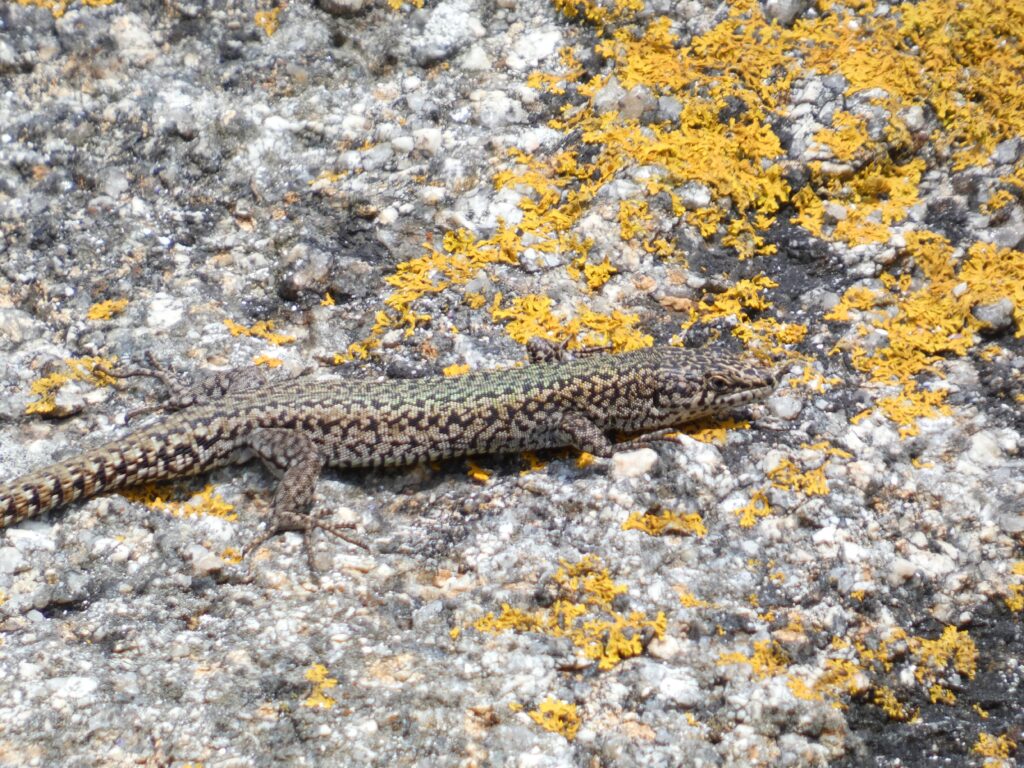
At the end of the visit I joined a local biologist for a chat, who kindly showed me some extremely tiny botanic specialties of the island. The sand toadflax (Linaria arenaria) and the sea stork’s-bill (Erodium maritimum) are minute coastal plants with a compromised conservation status in Spain. The largest population of both species in the whole Iberian peninsula are located in Sálvora, and are subject to periodic surveys.
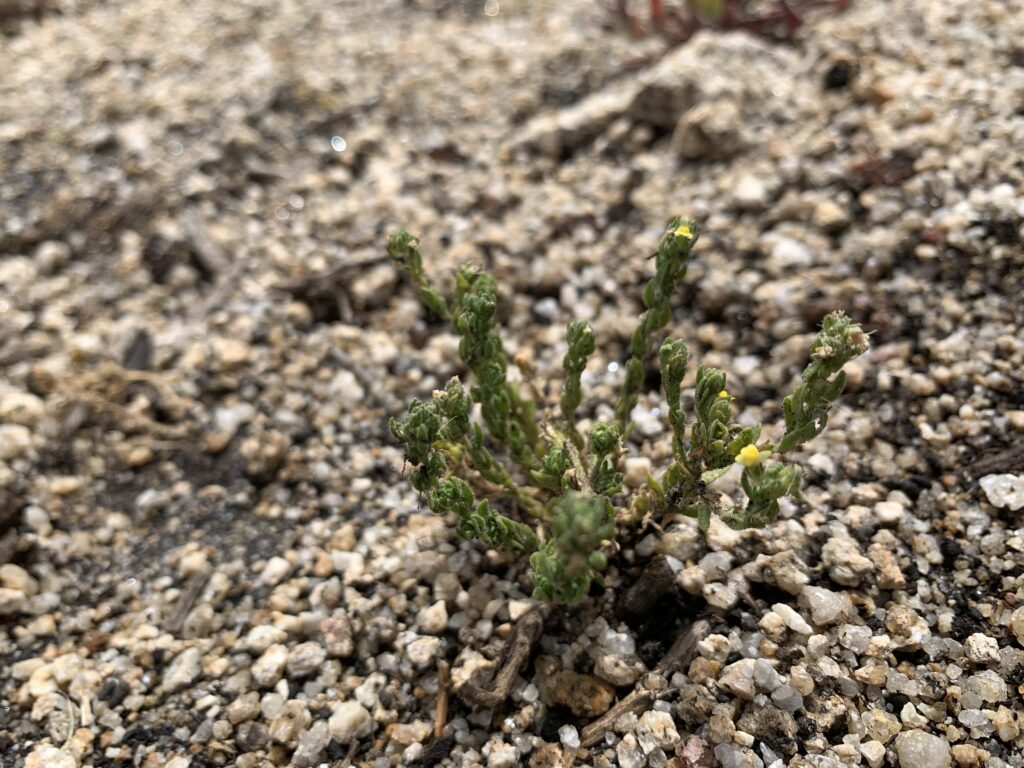
I hope I will get the chance to visit Cíes or Ons in the future, as these are the most prominent archipelagos in the area. However, Sálvora was an unexpected gem. A gloomy, rainy day ended up in a fantastic paradise beach under the sun surrounded by interesting wildlife.

